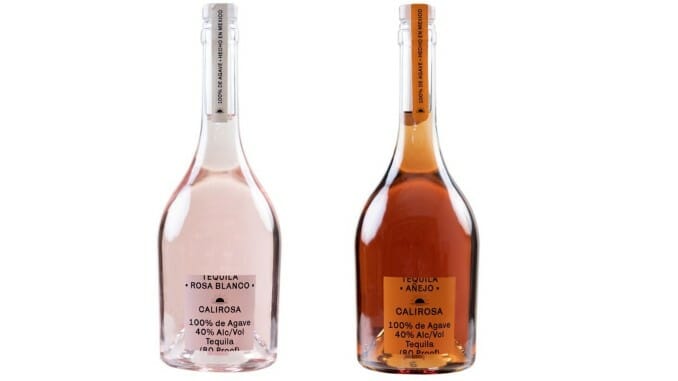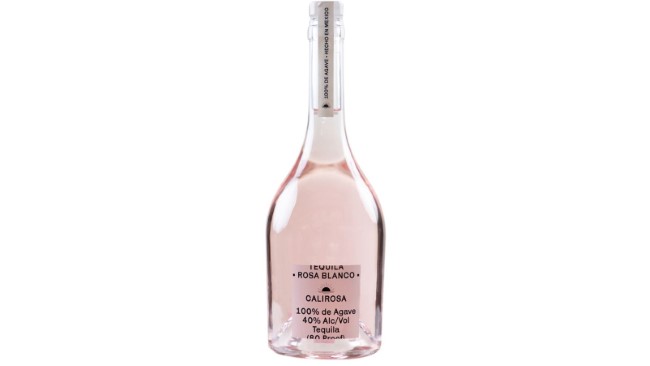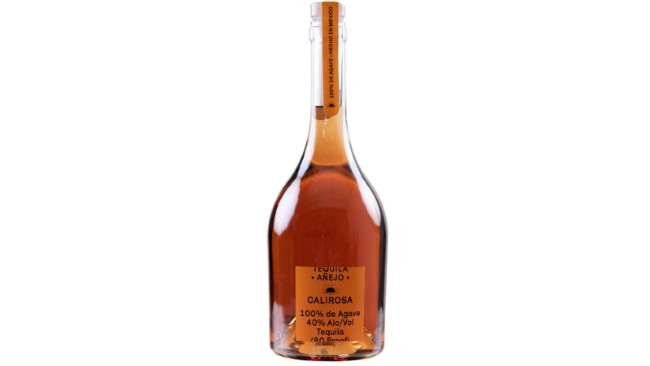
In the spirits world, innovation is everything, but it perpetually exists on the boundaries between “exciting discovery” and “annoying gimmickry.” Typically, a brand ends up falling into one camp or the other. It’s not often that you see both at the same time. But you do in Calirosa Tequila.
Calirosa is a novel new tequila brand that, to their credit, is exploring some ground I haven’t seen trodden before by aging their spirit in California red wine barrels rather than used American bourbon barrels. Suffice to say, this is going to result in a significantly different product for reposado, anejo or extra anejo variants in particular, which will be drawing a similar but substantially different suite of flavors from wood that previously contained wine (and likely received a very different toasting) rather than the charred oak of American whiskey/bourbon. The “blanco,” on the other hand, would theoretically be exactly like other blanco, or unaged tequilas, except for the fact that Calirosa gives it a very brief aging of only 30 days in the wine barrels. Taking one look at the bottle, it’s quite clear why they’ve done this—regardless of any flavor contribution, the perfectly pastel/coral pink hue of the bottle begs for Instagram advertisement in the era of rosé wine meme-ification. You can just imagine some venture capitalist’s eyes lighting up at the concept.
And then you look at the label on every bottle of Calirosa Tequila, and the smile is replaced by a confused frown. Why is the word “tequila” cut off? Why is the “80 proof” text at the bottom half obscured as well on this small label? Was there a problem down at the bottling plant? Is the whole lineup about to be recalled?
No, as it turns out—the half-legible labels were instead apparently a design choice. I check with the brand rep just to make sure, and they said the following: “The brand intentionally cut off the label because it was a design element that they believed would spark conversation.”
Suffice to say, I think the people who made that decision were right, as long as they consider people saying “What the hell happened to these labels?” a valuable conversation to be happening about the brand. Personally, I think Calirosa is missing a big opportunity to play up its wine barrel aging on its label—the actual thing that makes it unique—and instead using “confusion” as a marketing tactic. But what do I know; I’m not a graphic designer. I’m a spirits writer! So let’s get to tasting, and judge this stuff on the merits of what’s in the bottle rather than what’s on the label.
Calirosa Tequila Rosa BlancoMSRP: $49
The “Rosa Blanco” name is a nice touch on this beautifully hued bottle, which as previously mentioned was aged for a brief 30 days in California red wine barrels. I question how much character this will actually be able to contribute to the finished product, other than the color, but the other specs are actually confidence builders in the quality of the product. Before its unorthodox aging, Calirosa’s tequila is quite traditionally produced, from agave baked in brick ovens, before fermentation in stainless steel and two rounds of distillation in copper pot stills. It’s bottled at the legal minimum of 40% ABV (80 proof), which is little surprise given the kind of flirty, female-centric marketing this will likely receive in the U.S. Still, it’s nice to see a traditionally produced tequila under the hood.
On the nose, the Rosa Blanco initially reads as fairly rich (for a blanco) and spicy—I’m getting lots of cracked pepper, fresh agave, salt and mineral notes. Over time, sweeter elements of orange zest and vanilla become more apparent, eventually suggesting orange soda. One might think they’re also getting faint notes of strawberry jam, but it’s hard to say whether the red fruit impressions are simply something you expect to find in a product this color. Regardless, the contribution from the barrel seems fairly minimal, but the tequila itself is full of character.
On the palate, this is quite peppery and spicy, which happens to be something I like, though it may not be quite what the intended consumer would be expecting. Things do turn fruity, though, with orange marmalade and strawberry jam notes, which segue into a finish that reins in the sweetness, turning fairly dry and slightly bitter, almost pithy. It’s a bit hotter as well in the ethanol department than you’d expect for the low proof, and I was feeling the Rosa Blanco more in my chest than one expects with a merely 80 proof spirit. Nevertheless, the novelty of the color and pleasant fruit/spice profile is enough to make me enjoy this one for what it is, and you know it will stand out on a shelf.
Calirosa Tequila AnejoMSRP: $74
Unlike the brief respite in oak experienced by the Rosa Blanco, the Anejo entry from Calirosa (they didn’t bother with a reposado, though they do have an extra anejo) has been in those ex-wine barrels for quite a while, at 18 months. And one can clearly see that from the bottle as well, as the exposure has turned this tequila to a unique shade of auburn, almost ochre. Suffice to say, the base tequila is sure to have been transformed in a much more thorough way as a result. Let’s see.
On the nose, this is quite unique, pretty much unlike any tequila nose I’ve smelled in recent memory. It’s very sweet, very decadent and confectionery in profile—I’m getting lots of cake batter aroma, along with buttercream frosting, vanilla and some berry notes. The vanilla is quite heavy, though there’s also toasty elements that are likely derived from the wine barrels as well. It’s an almost unnerving amount of “baked goods” vibes on the nose for me.
On the palate, I’m getting caramel and chocolate-covered orange segments, along with more of those toasted vibes—almost like toasted marshmallows. It’s quite sweet again here, with lots of vanilla and a more nebulous sugariness. Search for them, and you will find the more expected fruit notes of strawberry and currant, but they play a secondary role behind all of the sweetness and confectionery notes.
All in all, I think this is a really interesting experiment, but the quality tequila here has really been overtaken and defined by the barrel. For some consumers who prefer anejo tequila, that may be just what they’re looking for. Personally, I wouldn’t have minded a more delicate touch here.
Jim Vorel is a Paste staff writer and resident liquor geek. You can follow him on Twitter for more drink writing.

